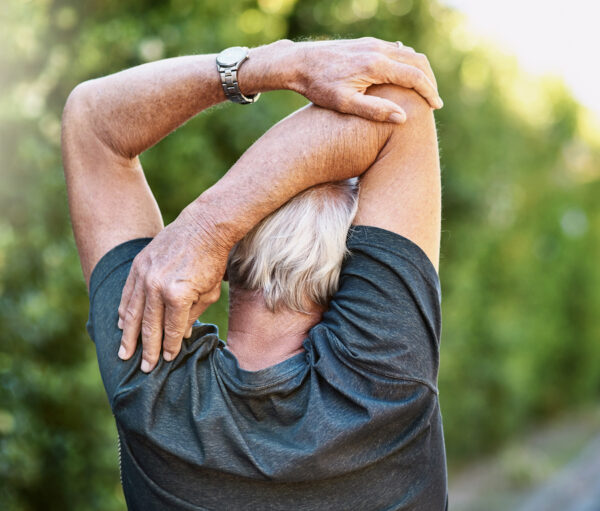The Importance of Stretching for Older Adults

Achy joints, stiff muscles, and a chorus of pops and creaks when you move. You exercise the recommended 30 minutes per day, five days a week. So why are you struggling with sore muscles and a lack of flexibility?
As we age, our muscles and joints weaken, and our range of motion deteriorates. Most of us know the incredible benefits of exercise. But we often leave out an essential element of fitness health—stretching.
Stretching is just as important as your daily exercise routine. Let’s discuss the importance of stretching and how it can change your body and improve your health!
Benefits of Stretching
Remember when you could easily bend over and pick something up, walk around holding your toddler, or sit on the floor and get up easily? Unfortunately, those things get more difficult as we age. Incorporating stretching into your daily routine (especially before and after exercise) will significantly improve your flexibility and overall health.
Here are some of the BIG benefits of stretching:
- Improves flexibility and circulation
- Increases blood flow and energy levels
- Reduces back pain
- Strengthens muscles
- Reduces arthritis pain
- Improves poor posture
- Enhances mobility
- Reduces risk of injury and falling
- Relaxation
Getting Started
Incorporating stretching into your daily routine (especially before and after exercise) will significantly improve your flexibility and overall health. Choose an exercise that incorporates and facilitates stretching, such as yoga, Pilates, Tai Chi, and swimming. Older adults should stretch major muscle groups at least two to three days a week or four to five days for maximum results. A quick stretch of 5 – 30 minutes before bedtime is a great way to calm your body and improve your sleep.
Stretching Tips
Like any other exercise, there are tips to reduce injury and ensure the best result when stretching.
- Warm up before stretching (walking)
- Hold each stress for 10-30 seconds to allow your muscle ample time to relax
- Don’t bounce while you stretch to reduce the risk of injury
- Stop stretching if you feel pain
- Take slow deep breaths while stretching
- Invest in a foam roller
Simple Stretches
It would be best to focus on stretches for major muscle groups, including your neck, arms, back, hips, and legs.
Shoulder and Upper Arm Stretch
This stretch will loosen up your shoulder joints.
- Stand, or sit with your back straight, chest up
- Slowly grab your right arm with your left hand and gently pull your arm across your chest until you feel a stretch in your shoulder
- As you stretch, keep your elbow below shoulder height
- Hold for up to 30 seconds,
- Switch sides, then repeat
Overhead Side Stretch
Good to loosen up your core, back, and shoulders.
- Stand/sit with your arms shoulder-width apart and raise your arms over your head, interlocking your fingers
- Slowly lean to the left, hold for 10 to 30 seconds, and return to the center
- Repeat on the right side
Seated Knees to Chest Stretch
This lower body stretch improves mobility in your hips, legs, and knees.
- Sit comfortably in a chair, grab your right knee, gently and slowly pull it toward your chest
- Hold for 10 to 30 seconds
- Slowly guide your leg back down to the floor and repeat with your left leg
Stretching not only feels good, but it’s also a great way to improve flexibility, loosen up muscles, improve balance, relax your joints, and increase circulation and blood flow.
Please consult your doctor before beginning this or any other exercise program.


